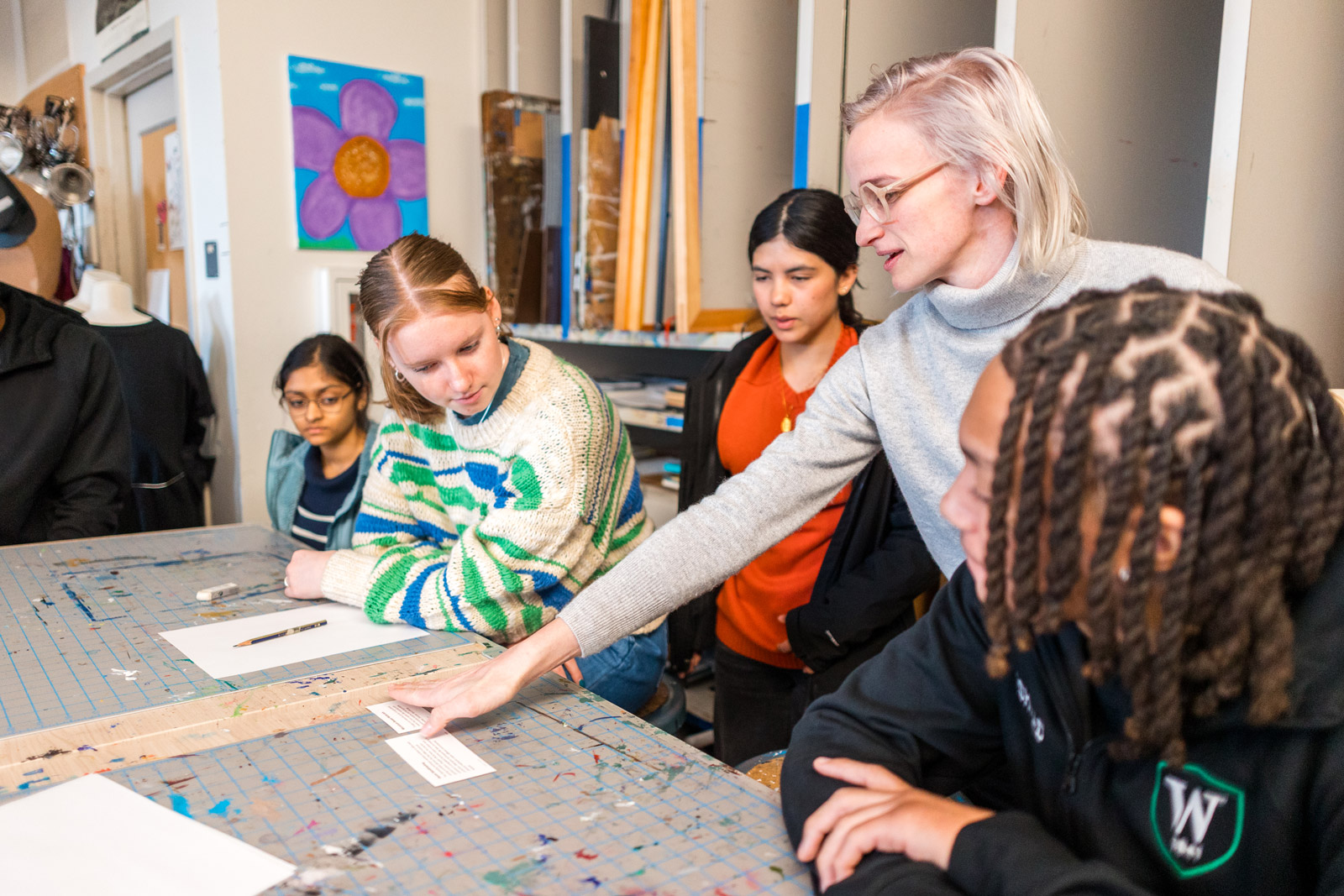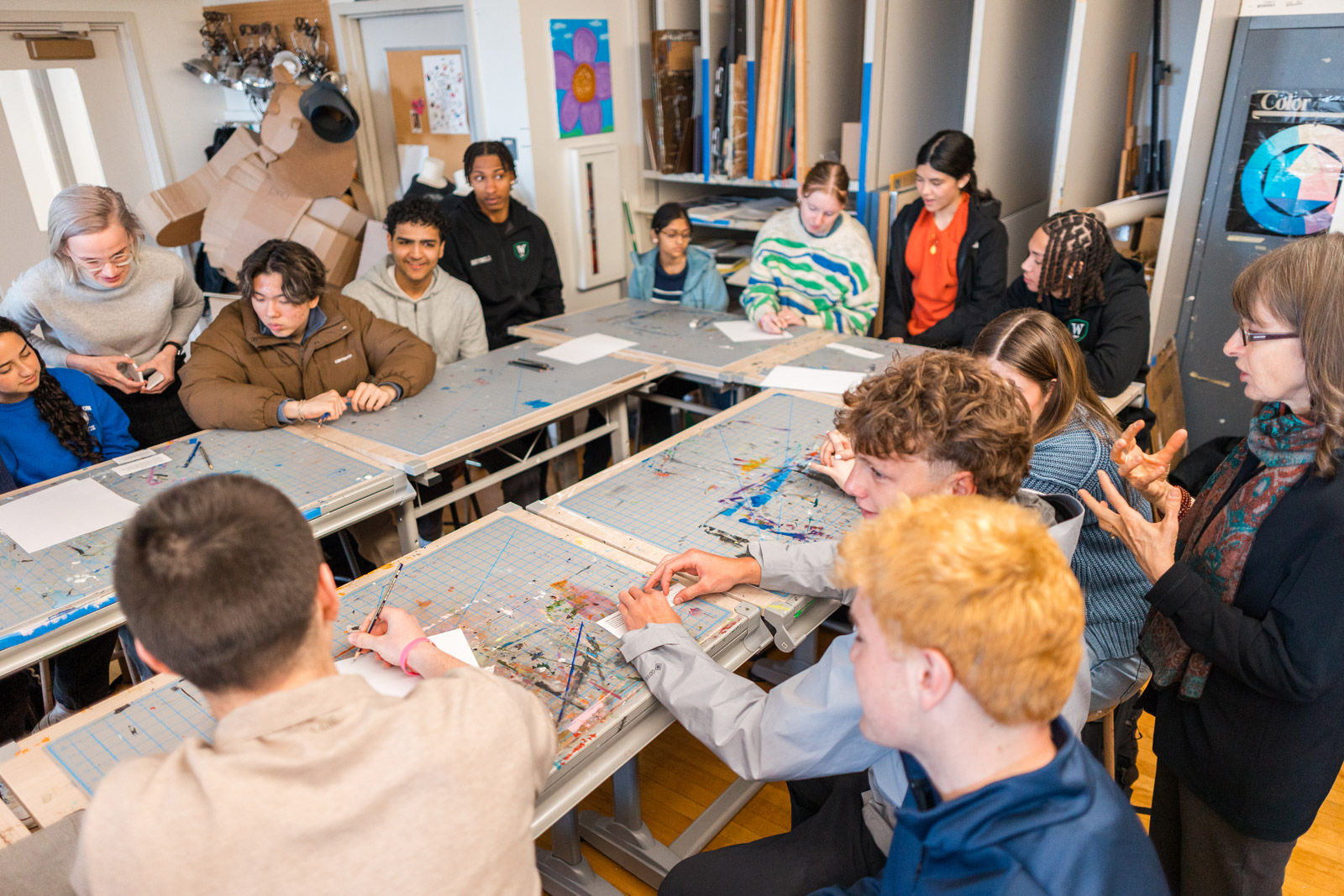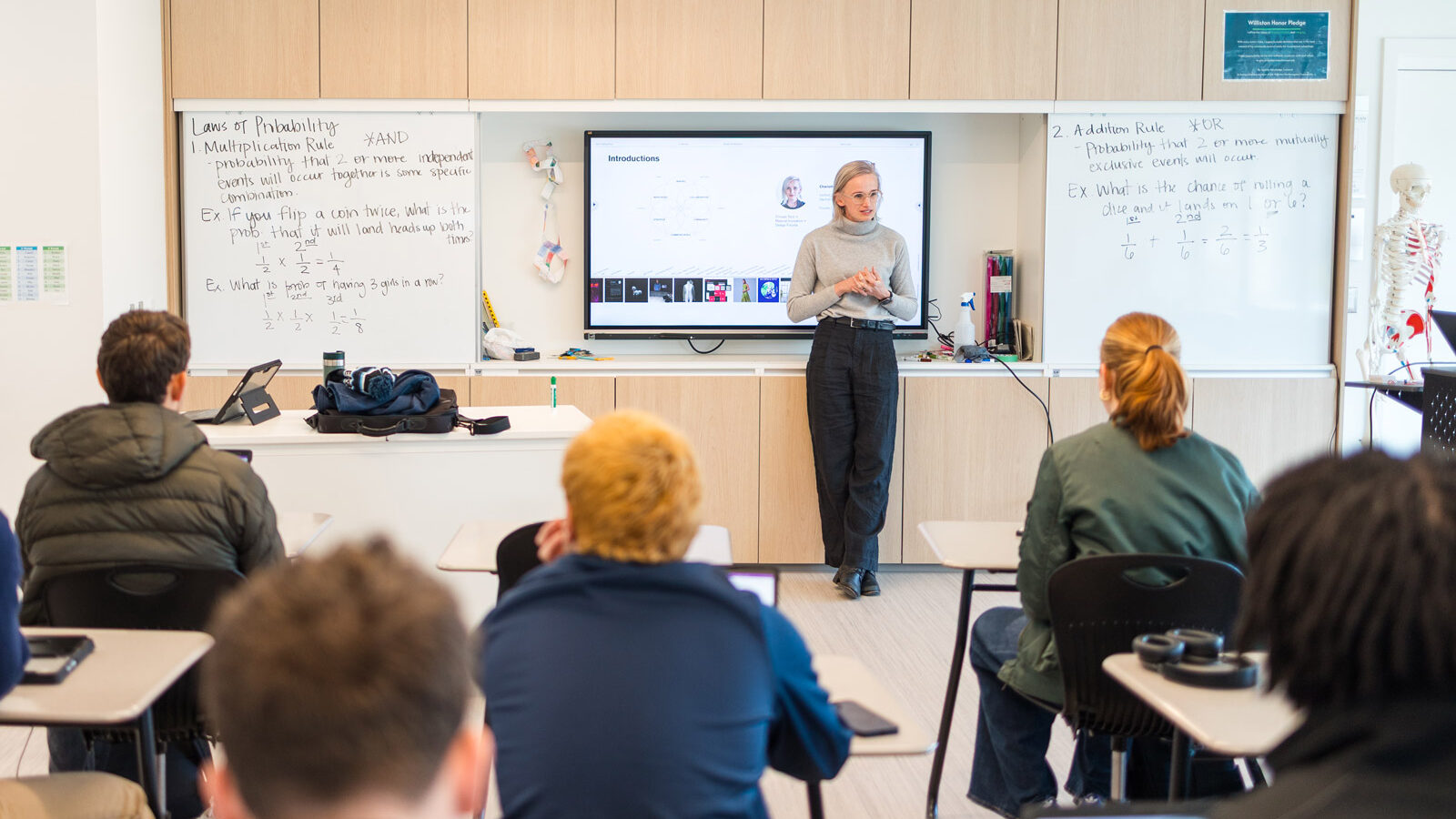The Williston Northampton School wrapped up its 2024-25 Grum Project Visiting Artist series with a visit from Charlotte McCurdy, a designer and researcher who teaches at Stanford University’s d.school.
McCurdy came to Williston to discuss her research efforts, which focus on climate change and materials. Much of McCurdy’s work currently looks at sustainability within the materials of fashion. Her work has been showcased in a plethora of ways, including a permanent exhibit at The Metropolitan Museum of Art in New York City, where a dress she co-created with fashion designer Phillip Lim and is made out of sea algae sequins.

“My primary mission in life is centered around climate change,” McCurdy said. “I’m really interested in design as a set of tools for both imagining what does not yet exist, but then also rendering and making vivid those possibilities so that more people can feel included in the debate around what it is we want to do, and also ideally pull together towards a preferable future.”
For her visit, McCurdy made full use of her time. She started with a presentation at an all-school assembly to introduce herself, taught two lectures in two different Williston classrooms, then hosted a talk in the Phillips Stevens Chapel that was open to the entire school community.
“It’s super essential to talk to young people because I’m interested in broad, shared, collective ideas,” McCurdy said. “In some ways, I’m like a science communicator, and design, generally, is in the business of meeting people where they’re at. … I am always interested in holding myself accountable to real people in their lives—what they’re bringing to the conversation, what their ideas and priorities are.”
McCurdy’s visit provided plenty of discussions for students and faculty—something that Natania Hume, Visual and Performing Arts Teacher and Department Head, hoped for when she asked McCurdy to be a Grum artist. Each academic year, the Visual & Performing Arts Department collaborates with one other department to bring a lecturer in. This year it was the Science Department.

“The ethics of making and design has long been an interest of mine, and so in researching that I found Charlotte’s work and was just blown away,” Hume said, “especially by the idea of creating goods and consumer products that are carbon negative—not just neutral. Commerce is powerful in driving human behavior—it’s a more important area than people at first understand. The power of money and how we spend it can pretty much make or break us at this point.”
During the classroom visits, McCurdy put students to work. Breaking out into small groups, McCurdy challenged students to rethink how garments of clothing are made—and what they are made out of—to get them thinking about design like she does. McCurdy was blown away by the enthusiasm showed by students.
“They came up with great ideas in just these 15, 20-minute exercises,” McCurdy said. “They were able to grab on with playfulness, but also earnestness and put forward some interesting ideas.”

